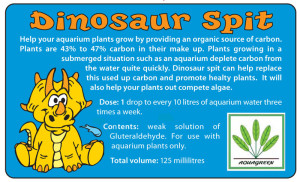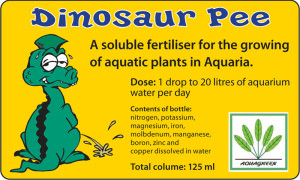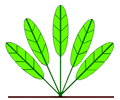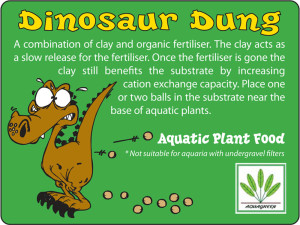Dinosaur fertilisers explanation.
Dinosaur spit is a ten percent solution of glutardaldehyde, a carbon compound usually used as a disinfectant in hospitals and piggeries however in small doses appears to kill single celled animals for a while then break down to carbon that becomes available for plants thus a two level plant growing assistant. An attack on algae and carbon for plant growth.
 Frequently Asked Questions about Dinosaur Spit
Frequently Asked Questions about Dinosaur Spit
Dinosaur dung is a mixture of blood and bone fertiliser with terra cotta clay and has some phosphate, it is placed under or near plants and supplies organic fertiliser as well as increasing the cation exchange capacity of the soil. (look up “cation exchange plant growth” on Wiki if you want an explanation). Put two or three pellets around your big plants and dont do it again till you notice the leaves getting a little smaller or other plants slow down.
Frequently Asked Questions about Dinosaur Dung
Q1. How big is a dinosaur dung pellet. A1. A dung pellet is cylindrical and approximately 18mm tall and 18mm diameter.
Q2. How long does dinosaur dung last in the planted aquarium. A2. The clay will last for ever, the blood and bone fertiliser will slowly be removed from the clay by plants may last up to 3 months before it is all used up by the plants.
Dinosaur pee is a mineral fertiliser that is a mix of micro and macro fertilisers less phosphate because phosphate and iron don’t go together. It supplies all the fertiliser needs except phosphorus which gets added in fish food and in the blood and bone from the Dinosaur Dung.

Frequently Asked Questions about Dinosaur Pee
The three different fertilisers are meant to be used together for the average sort of planted aquarium with water plants that has enough light and water movement to support plants growth. If you have a lamp that belts out heaps of light and want exceptional fast plant growth I suggest you go for the EI method. Aquagreen can supply most of the mineral fertilisers to make up your own mix.



